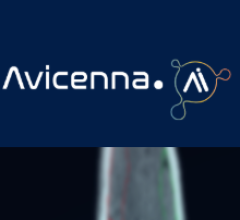
The CEO of the American College of Radiology, William T. Thorwarth, MD, recently presented testimony to the U.S. House Labor, Health and Human Services, Education, and Related Agencies Appropriations Subcommittee, in support of increased funding for the National Institutes of Health (NIH) in FY 2024. Photo credit: Getty Images
April 4, 2023 — In support of an increased funding recommendation for the National Institutes of Health (NIH) in federal fiscal year (FY) 2024, William T. Thorwarth, MD, FACR, Chief Executive Officer of the American College of Radiology (ACR) presented testimony to the U.S. House Labor, Health and Human Services, Education, and Related Agencies Appropriations Subcommittee during a March 23 hearing. On behalf of ACR — representing more than 41,000 diagnostic radiologists, interventional radiologists, radiation oncologists, nuclear medicine physicians and medical physicists, he urged the Subcommittee to provide at least $50.9 billion to the NIH for fiscal year (FY) 2024, an increase of $3.5 billion over FY 2023 levels, and in addition the release of the 21st Century Cures funds. Additionally, with the authorization of the Advanced Research Projects Agency for Health (ARPA-H), ACR supports an increase to this new agency while maintaining a separate appropriation outside of the NIH base budget in FY 2024.
The testimony, detailed in an ACR summary statement, pointed to radiology and imaging advancements in which ACR has participated, made possible by federal investments in the agency, to reinforce how robust NIH funding has improved radiology patient care. Those examples included: National Lung Screening Trial (NLST); Randomized Evaluation of Patients with Stable Angina Comparing Utilization of Noninvasive Examinations (RESCUE) Trial; Tomosynthesis Mammographic Imaging Screening Trial (TMIST); NCI-designated central public repository of medical images and associated clinical data from lung cancer screening patients.
In addressing subcommittee members, Thorwath said, “As a specialty with a long history of innovation, we know that strong and predictable funding for NIH and our national research infrastructure allows for the continued advancement of scientific discoveries and breakthroughs, improving the lives of patients with a wide spectrum of diseases and disorders, many of whom depend on radiology and imaging tools for prevention, diagnosis, and treatment of disease.”
Excerpts from the testimony presented by Thorwath, ACR CEO since 2014, specifically addressing the four significant examples of NIH funding which has advanced ACR’s work and patient care follow.
Impacting the Future of Medical Imaging
“ACR has historically been a leader in the radiology clinical trial space, helping to develop and implement new prevention, diagnosis, and treatment approaches at a faster pace for a variety of diseases and disorders,” said Thorwarth. “One of the most successful examples of advancing imaging practices through clinical research is the ACR-led National Lung Screening Trial (NLST). NLST was conducted by the American College of Radiology Imaging Network, a medical imaging research network focused on the conduct of multicenter imaging clinical trials, and the Lung Screening Study group established by the NCI to examine the feasibility of improving survival of lung cancer patients,” (1) he added.
In detailing the value of the study, Thorwarth reported the following: “The NLST study compared two ways of detecting lung cancer: low-dose computed tomography (CT), and standard chest X-ray. The study found that participants who received low-dose CT scans had a 15 to 20 percent lower chance of dying from lung cancer than participants who received standard chest X-rays. The study confirmed that screening with the use of low-dose CT reduces mortality from lung cancer, confirming the effectiveness of imaging for patients at risk for lung cancer. Thanks to the NLST study, low dose CT screening for lung cancer is now a widely available and critical tool in the early diagnosis of this deadly disease, helping to save thousands of lives each year.”
Advancements in Cardiac Imaging Diagnosis
Emphasizing the fact that heart disease is the leading cause of death in the United States, accounting for 1 in every 5 deaths in 2020 (2), Thorwarth shared this with the subcommittee: “ACR is pleased to be included in the NIH funded RESCUE trial (Randomized Evaluation of Patients with Stable Angina Comparing Utilization of Noninvasive Examinations), which has significant impact on patient evaluation. RESCUE compared two diagnostic imaging approaches, using coronary computed tomography angiography (CCTA) and single photon emission computed tomography myocardial perfusion imaging (SPECT MPI). (3) The two tools were compared to see which was most effective to assess the severity of ischemic heart disease in patients with stable angina symptoms. The CCTA treatment was shown to be as effective as the SPECT treatment, providing evidence supporting a ‘CCTA-first’ strategy for the diagnosis and management of these patients. A non-invasive diagnostic test, such as the tools used in this study, improves care for the patients, and advances the optimization of cardiac care. This study will have a long-term impact for those currently suffering from heart disease, or who may in the future.”
Encouraging Customized Breast Cancer Screening
A third ACR driven, NIH-funded, clinical trial summarized by the ACR in its testimony was the the Tomosynthesis Mammographic Imaging Screening Trial (TMIST). TMIST is a current study that will help researchers learn the best way to find breast cancer in women who have no symptoms. (4) Thorwarth specified, “This trial compares two types of mammograms, the standard digital mammograms (2-D) and a newer technology called tomosynthesis mammograms (3-D). This study focuses on detecting breast cancer before it becomes advanced, aiming to reduce the morbidity and mortality of women who develop breast cancer.” He continued, “TMIST is a multi-faceted study that uses integrated diagnostics to attempt to predict the likelihood of breast cancer in an individual. Family history, age, genetic markers, and breast density are examples of the data collected in this study to learn the behavior of breast cancer, with the intent to customize breast cancer detections strategies.”
Creating a Central Public Repository of Medical Images
One final example offered by ACR’s CEO was that of an ACR and NIH partnership with the NCI and Booz Allen Hamilton project to develop an NCI-designated central public repository of medical images and associated clinical data from lung cancer screening patients. Detailing the plan, he said, “This will be used in artificial intelligence (AI) algorithm development and validation within the research community. A comprehensive ‘AI ready’ dataset to use for algorithm training and validation is currently absent, particularly one that collects diverse, high-resolution annotated images accompanied with patient demographic characteristics, clinical history, cancer status, and CT imaging parameters.” Thorwarth added, “This repository will provide an opportunity for the development of new AI and machine learning algorithms beyond single institution experiences and will enable enhancements to equitable clinical care, leading to improvements in the diagnosis and treatment of lung cancer. ACR will facilitate collection and harmonization of images and corresponding data from a total of 15,000 lung cancer screening patients from up to 15 clinical sites within the United States.”
In his concluding comments, the ACR CEO said: “Radiology and medical imaging impact a wide array of diseases and disorders, impacting at some level, all Americans. The use of imaging tools stretches farther then the examples described for lung cancer, heart disease, and breast cancer. Radiology and imaging are essential in almost all aspects of early detection, diagnosis, and treatment, and should be included in all of NIH’s Institutes and Centers, as it is in NCI and NIBIB. Radiology and imaging are used as risk estimate tools, impacting a patient’s quality of life and reducing the likelihood of suffering.” He continued, “Strong and predictable funding for NIH is crucial to ensure continued advancements in biomedical research discoveries, including those in radiology…on behalf of ACR, we urge you to continue your strong support of NIH funding and appreciate your consideration of least $50.9 billion in FY 2024.”
More information: https://www.acr.org/
References:
1 https://www.cdc.gov/heartdisease/facts.htm
2 https://www.cancer.gov/types/lung/research/nlst
3 https://www.ncbi.nlm.nih.gov/pmc/articles/PMC5443342/
4 https://www.cancer.gov/about-cancer/treatment/clinical-trials/nci-supported/tmist


 December 17, 2025
December 17, 2025 









